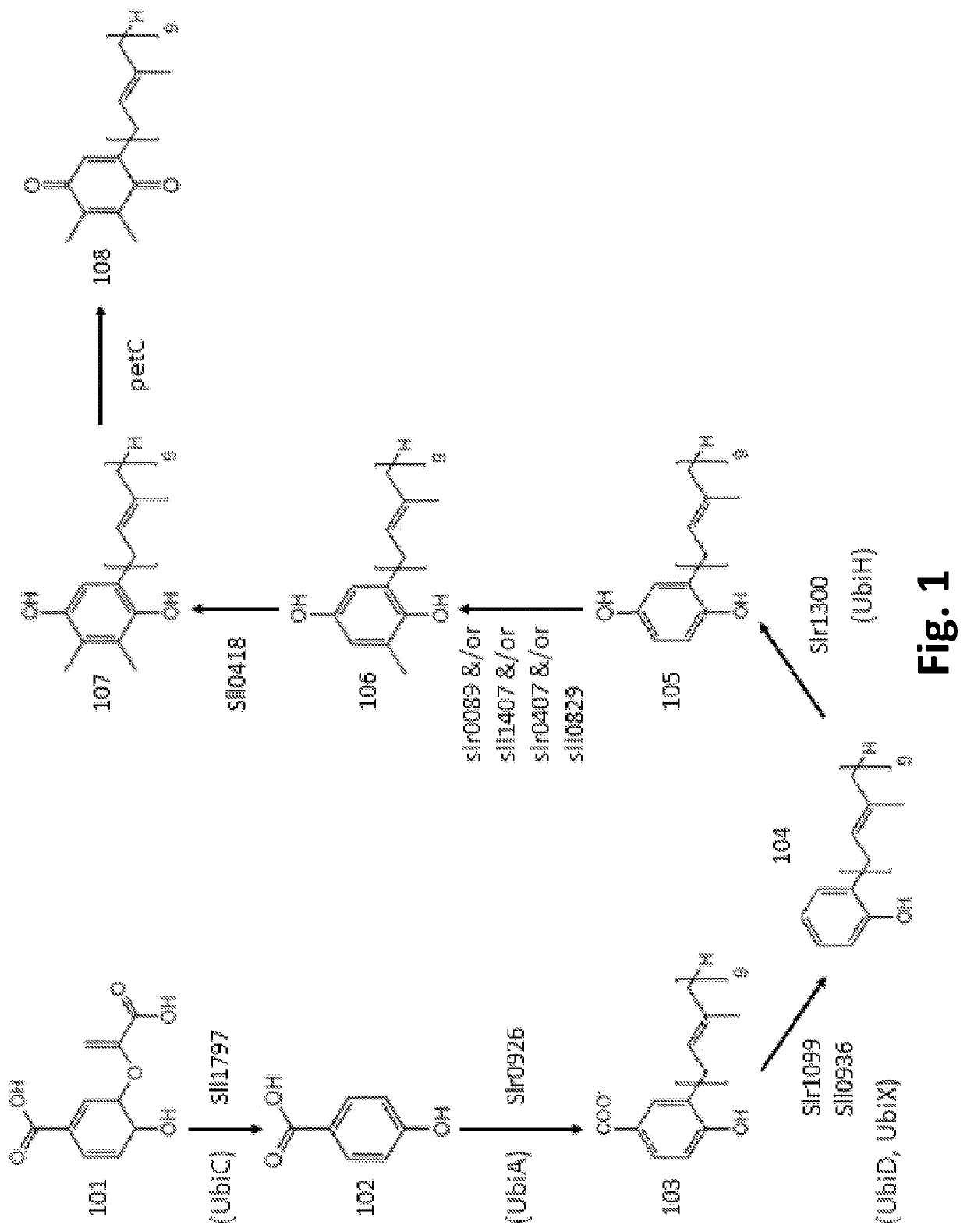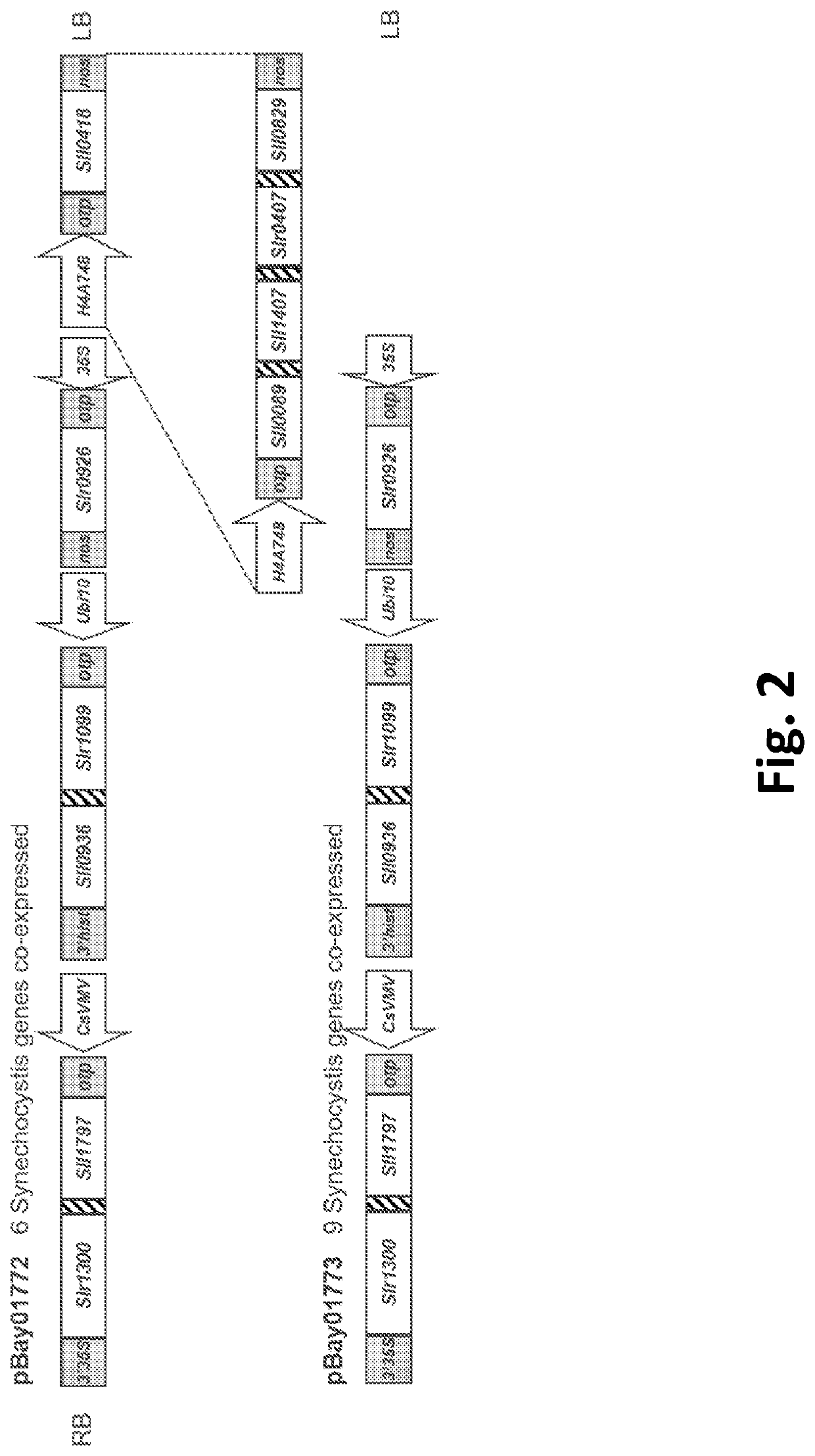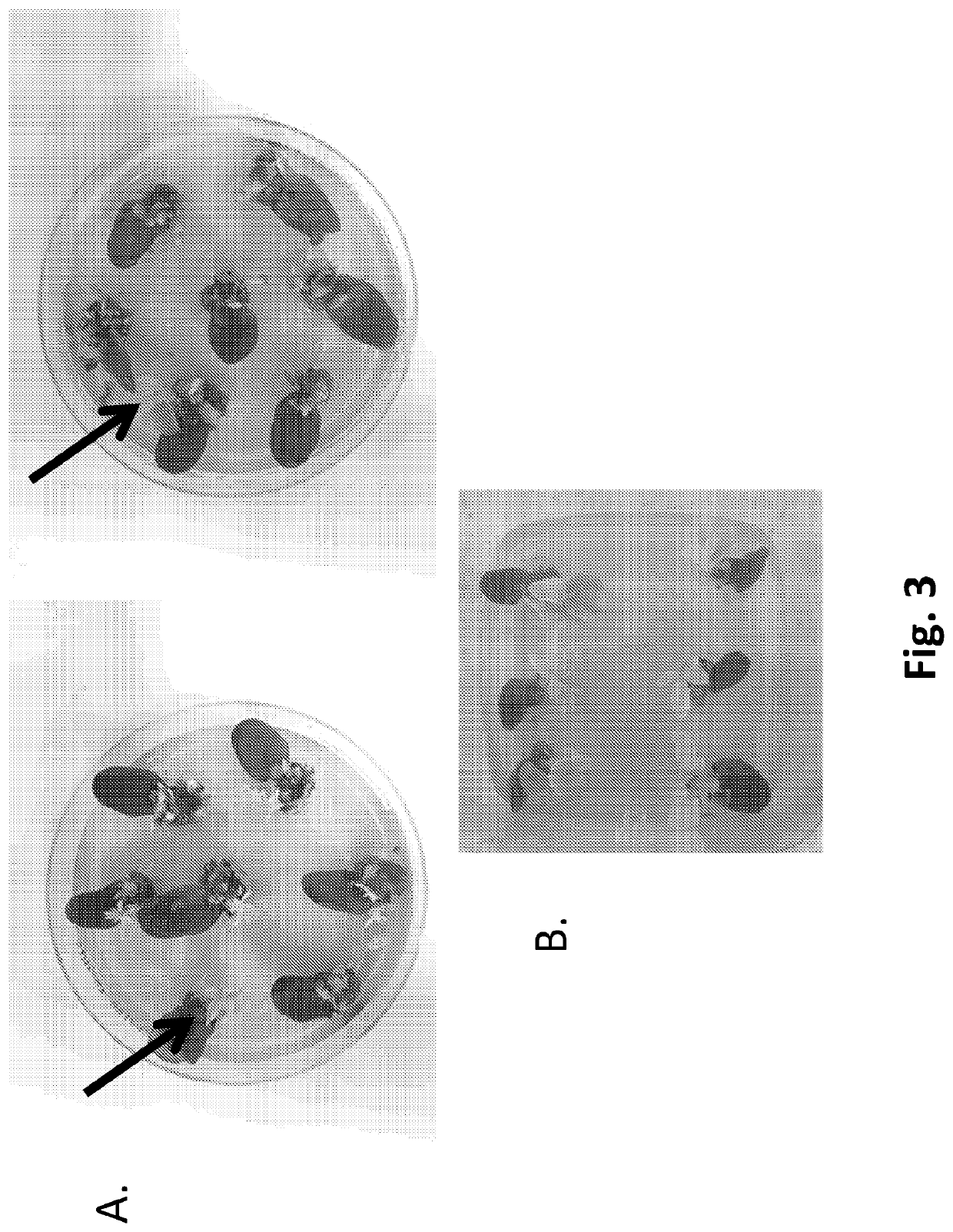Herbicide tolerant plants expressing a cyanobacterial plastoquinone biosynthetic pathway
a biosynthetic pathway and plant technology, applied in the field of plant molecular biology, can solve the problems of chlorophyll destruction by ultraviolet light radiation and reactive oxygen species, uncoupling of photosynthesis, and deficiency of accessory light-harvesting pigments,
- Summary
- Abstract
- Description
- Claims
- Application Information
AI Technical Summary
Benefits of technology
Problems solved by technology
Method used
Image
Examples
example 1
ation Vectors
[0143]Transformation vectors as illustrated in FIG. 2 were generated, comprising various components of a PQ9-synthetic pathway derived from Synechocystis sp. (strain PCC6803). Sequences of the coding regions illustrated at FIG. 2 are set forth below in Table 1, along with the petC coding sequence:
TABLE 1PolypeptideLocus(Enzyme activity)SequenceSll1797UbiCatgaagctctctcccgctgtttctcctagtcttgcttggcattctttggatttgctgtggcaagg(Chorismate lyase)agatcaacatgatgtgaggcatgggcttcctcattctgacttcctcctccatggcagatcctcattcttggagatggctccccaacaaggcatttgcagcttctcactggagagaagacagaagtggatgtgattgacatggctcctgatcaccaagagatgatggtgctcctcctcaaattaacactgttcctggccctcacttgagaaggcaagtttggctgaggaccaagagtggccaaaggcttgcttatgctgatcttggtgggatgcttctcatgagatgaatatttgcaaaacagaagtttgccaatttgggattctctctcaaggcttcacacagagctttacagagacattcaagctatctattgtggccacaacagaactctagcaaaggcttttggccaagaaggacccttctggggaaggcattacctctttggcatgacaggaagccattgacattgatctatgagatcttctctccatatctctcaagatatcttggagagcttccaaggccaaaatttgaa (SEQ ID...
example 2
ation of Soybean
[0144]The vectors described in FIG. 2 were transformed into soybean plants using standard methods for transformation. Both vectors were capable of generating viable plants grown in the presence of 0.2 mg / L Tembotrione
[0145]The resultant transformants were evaluated for the copy number (CN) and were tested by quantitative PCR with existing methods for 3 components (3'nos UTR, 35S promoter, CsVMV promoter) present in the transforming DNA.
[0146]The CN data shows that the first 3 cassettes always are present in the selected events, suggesting that the presence of each of slr1300, sll1797, sll0936, slr1099, and slr0926 is sufficient to confer tolerance of the plants to HPPD inhibitor herbicide. It is possible that fewer than all 5 genes are needed, as some enzymatic activities may be provided by resident enzymes in higher plant chloroplasts. For example, since all 3 cassettes are maintained, one possible scenario is that tolerization may be obtained by providing: (a) at l...
PUM
| Property | Measurement | Unit |
|---|---|---|
| nucleic acid | aaaaa | aaaaa |
| size | aaaaa | aaaaa |
| resistance | aaaaa | aaaaa |
Abstract
Description
Claims
Application Information
 Login to View More
Login to View More - R&D
- Intellectual Property
- Life Sciences
- Materials
- Tech Scout
- Unparalleled Data Quality
- Higher Quality Content
- 60% Fewer Hallucinations
Browse by: Latest US Patents, China's latest patents, Technical Efficacy Thesaurus, Application Domain, Technology Topic, Popular Technical Reports.
© 2025 PatSnap. All rights reserved.Legal|Privacy policy|Modern Slavery Act Transparency Statement|Sitemap|About US| Contact US: help@patsnap.com



